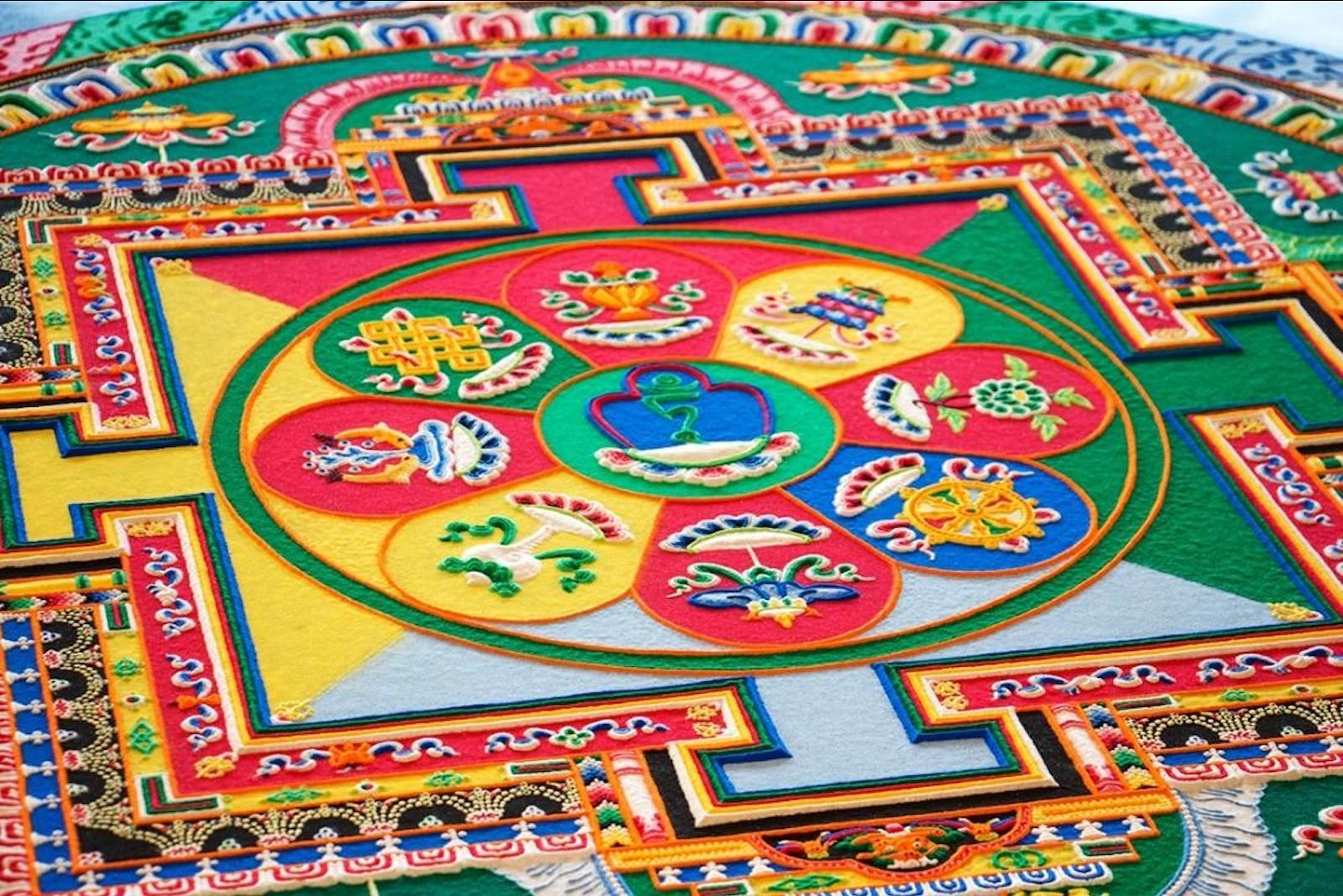
Above all else, art is about a search for meaning. In our modern world, connecting an artist’s vision of the world with a viewer’s understanding is often the job of museum curators and educators, who act as interpreters and gatekeepers. This has not always been true for all cultures. Art practice is woven into the daily lives of people in indigenous communities, connected to a collectively experienced ritual or performance. The result is transformative and contributes to cohesion and a shared vision of the community as a whole.
In the mid-twentieth century, a countercultural wave brought a rising awareness of environmental degradation fueled by a capitalistic, consumer-oriented system. Contemporary artists like Christo and Jean-Claude and Robert Smithson responded by taking their work out into the open air, bypassing the museum. Here, the results are exposed to real elements: sun, wind, rain, and the vagaries of human intervention.
Christo has stated the importance of the “nomadic, transitional qualities” of his projects: “… it goes up very fast, it is immediate, and then it is gone forever. If you didn’t see it, you missed it.” Burning Man, an annual event that gives birth to a wild explosion of creativity in the middle of Black Rock Desert, Nevada, has become a symbol of the ephemeral, communal, artistic experience. Here are ten other artworks that put viewers "in the moment" and allowed them to fully engage with the piece.
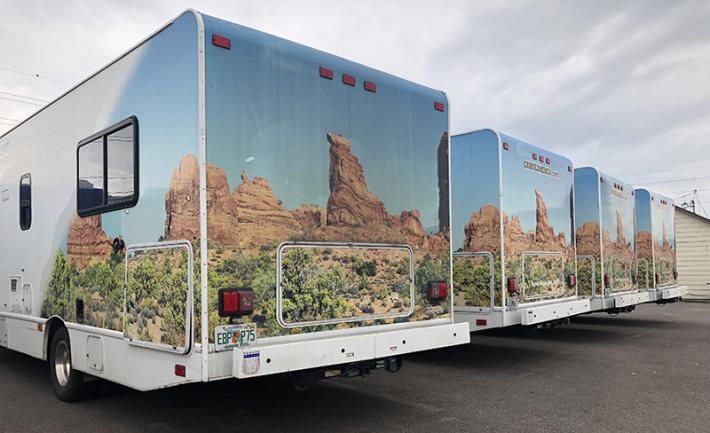
Jiří Kovanda, The Birds of North America RVs.
Black Cube is a Colorado-based non-profit embracing the museum without walls concept. Founded in 2015 by artist and philanthropist Laura Merage, the organization’s focus is squarely on supporting the sustainability of their artist/fellows. While the artists generate the ideas and select the locations, the organization also forms international collaborations such as the current exchange program with the Center for Contemporary Art FUTURA in Prague. Black Cube brought the respected Czech performance artist Jiří Kovanda to Denver this September for his exhibition of The Birds of North America. Kovanda is known for exploring the ephemeral aspects of life like his Kissing Through Glass piece at the Tate in London in 2007. Utilizing the element of surprise, the site of the Denver performance was only revealed the day before the event, which is frequently the case with Black Cube sponsored programs, which build suspense by not revealing where their next site-specific cultural experience will occur.

Angus McCullough, Installation in From Away.
Overnight Projects is a nomadic, Vermont, artist-run collaborative that creates temporary, site-specific exhibits. On a steamy hot midsummer weekend founder Abbey Meaker and a group of selected artists from Vermont, New York and beyond, turned The Sand Bar Inn, a motel in South Hero, Vermont into a place of magic. The low-lying site had been flooded multiple times and now is an abandoned, crumbling ghost in a weedy overgrown field. From Away, the title of this temporary experiential exhibit, drew a crowd eager to explore the dilapidated interior of a former vacation paradise. Drawing on nostalgia for a nearly forgotten past these artists, assisted by a few generators, transformed peeling paint and rotting wood into art. Each artist selected one of the former motel rooms setting the boundaries of a particular experience engaging the senses beyond the visual. The amount of energy and effort it took to put together this ephemeral event was laudable. The artists remained on-site enthusiastically interacting with curious onlookers and well-informed art aficionados. A few days after the show was dismantled the Sand Bar Motel receded back into weeds letting time and weather continue their course.
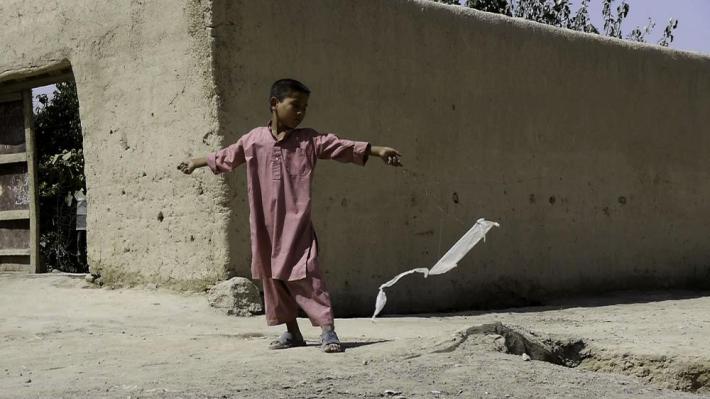
Francis Alÿs, Still from Children's Games #10 Papalote, 2011.
Francis Alÿs is a Belgian-born, Mexico-based artist known for works like When Faith Moves Mountains (2002), in which he worked with 500 volunteers outside of Lima, Peru to shift the location of a sand dune. An image from this project of the human line traversing the Peruvian desert recalls Christo’s Running Fence (1976) with people in place of flowing material. Like Christo, Alÿs’ concepts evolve over long periods of time and occur at the intersection of politics, art, architecture, and life. In publications of his writing, the artist makes himself vulnerable, revealing his fragility and deeply human moments of self-doubt. Alÿs can also be deceptively simple. Philosophically, his ideas hint at Buddhism, stating that “… anything we may possibly achieve will be no more than a drop of rain in the sea and given that what matters is the effort behind the action…” By embracing the momentary gesture, and then walking away, he treads lightly on the earth.
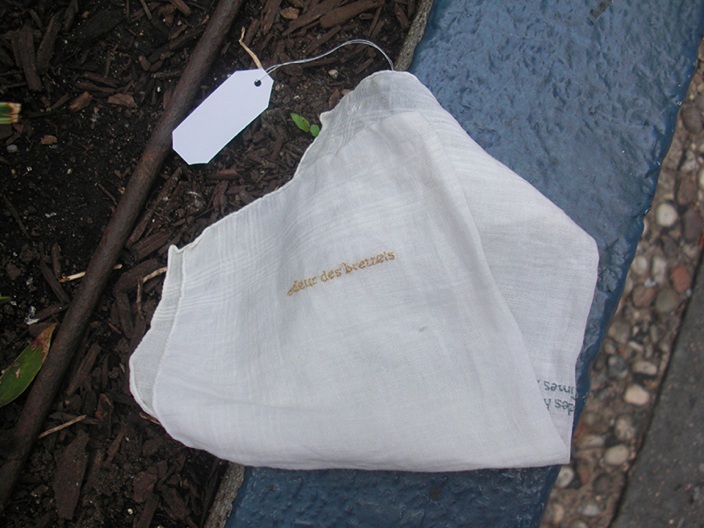
Heather L. Johnson, embroidery from In Search of the Frightening and Beautiful.
Heather L. Johnson rides her motorcycle across the country and around the world, sewing, drawing, interacting with people, and leaving fragments of herself behind for her project In Search of the Frightening and Beautiful. Embodying the essence of what it means to be a nomad she has turned her life into a literal journey and, in turn, that journey has become a work of art. In the past twenty five years Johnson has ridden alone over 38,000 miles through fourteen countries. She communicates regularly via Facebook with those who follow her. Her goal, ultimately, is to circumnavigate the globe. She shares an embrace of risk, a common denominator with other artists who identify their work as ephemeral, an art form embedded in the moment. It is interesting to draw comparisons between Johnson’s life and Robert Pirsig’s 1974 fictionalized autobiography, Zen and the Art of Motorcycle Maintenance. An encounter with Johnson may be purely happenstance, or it may be part of a plan she developed during her fall 2018 residency at the Houston Center for Contemporary Craft in Texas. Johnson considers herself to be a perpetual outsider and hopes that her spontaneous interactions inspire people to reflect on who and where they are in space, time, and psychologically in their relationship with others.

Christiaan Lochner, Noordhoek Common, Noordhoek, November 30, 2014. Cape Town Southern Peninsula, South Africa.
The Global Nomadic Art Project was first organized in Korea in 2014 under the auspices of YATOO, a Korean-based artists' collaborative working in and around the city of Gongju. The literal meaning of the word YATOO is to ‘throw in the field’. The mission of their organization is to bring together Nature Artists from around the world to work and live together. They were founded on the idea that ‘nature has no borders’. A GNAP typically consists of three parts: outdoor workshops, indoor exhibitions with fifteen to twenty artists from around the world brought together over one to three weeks, and the publication of documentation from that experience. Their practice of Nature Art is characterized by working together in harmony with the seasons, reflecting a traditional rural lifestyle and leaving no trace of their activities to mar the earth. Since 1991 YATOO has also organized an annual International Nature Art Symposia. Since 2004 they’ve held the Geumgang Nature Art Biennale and since 2009 a twice-yearly international artist-in-residence program. They continue to work with partners on art projects in India, South Africa, Iran, across Europe, and in many other countries.
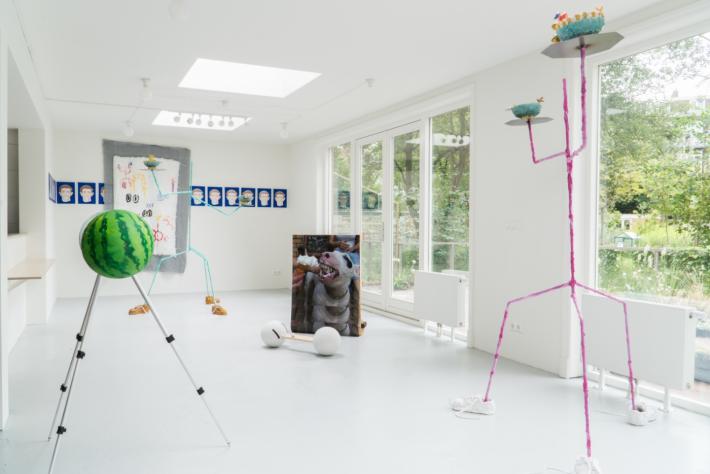
Afra Eisma (NL) and Sepide Zamani (IR), Installation of Curl Up.
No Man's Art, founded by young entrepreneur Emmelie Koster in Amsterdam, is a global pop-up art gallery. Since 2011 their goal has been to support young artists early on in their career, bringing those emerging artists into spaces and places that might otherwise be inaccessible to them. There is a fearless aspect to the work of No Man’s Art, daring to inject artists into unique environments demonstrated by their pop-up exhibitions in Tehran, Shanghai, and Cape Town. In order to nurture artists whose conceptual work can be challenging, No Man’s Art sponsors artists' talks aimed at educating a new audience of young collectors. Building a sustainable life for their artists through their membership organization runs counter to the “here today, gone tomorrow” narrative of ephemeral art, but No Man’s Art facilitates the excitement of discovery when you are able to recognize and support emerging talent.
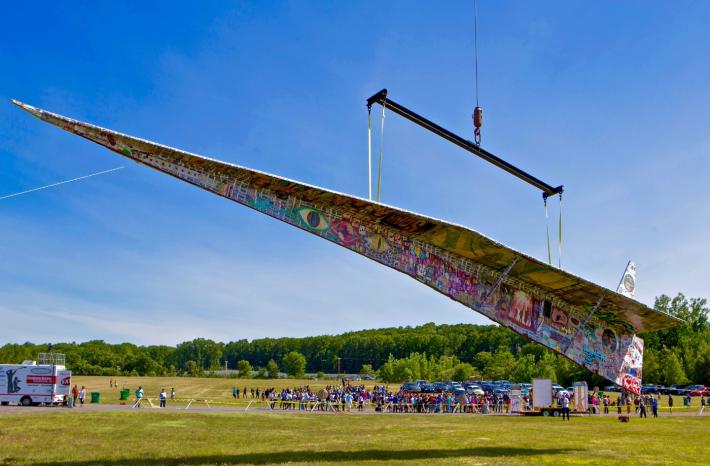
Project Soar, Fitchburg Municipal Airport.
Jerry Beck and The Revolving Museum first gained notoriety in Boston in the early 1980s with the groundbreaking The Little Train That Could…Show, when Beck enlisted local artists to transform twelve abandoned railroad cars, engaging the help of some homeless folks who lived in those cars, into a massive work of public art. Not a household name back then, Beck is now synonymous with his nomadic brainchild “the ever-evolving Revolving Museum.” Beck was inspired by an encounter in Nevada with Native American Folk Artist Rolling Thunder who built a visionary compound that fostered a sense of community. The idea of community building and respect for the innate human potential in all of us to make art is the central guiding light of Beck’s work. The Revolving Museum (TRM) has gone on to revitalize many unorthodox, unused, or abandoned urban spaces, including a “haunted” civil war fort on a Boston harbor island, a 200-year-old rum cellar, a historic textile mill, empty warehouses, and alleyways. In an effort to reach underserved neighborhoods, the museum transforms vehicles into moveable feasts of art. Airline baggage cars, a vintage ice cream truck, school buses, bikes, boats, just about anything that moves, all created with a touch of humor and a refined sense of the absurd. Beck and TRM have won awards from state and federal institutions for their work transforming communities through art.
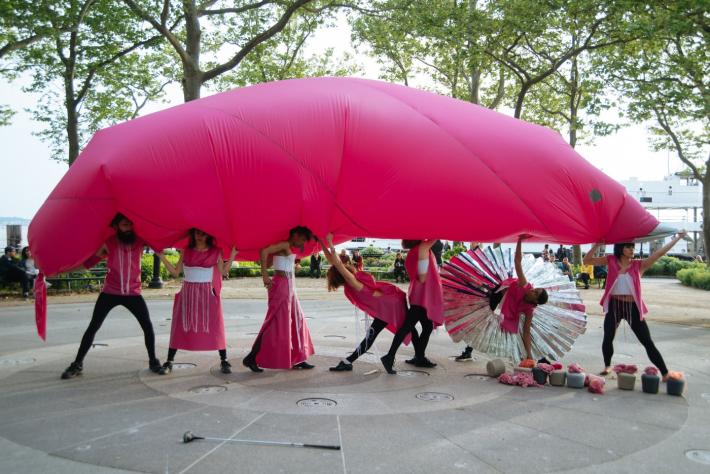
The Moving Company, Mauve Bird with Yellow Teeth, Red Feathers, Green Feet, and a Rose Belly from Part PINK, 2017. Battery Park, New York City.
Tamar Ettun and The Moving Company is an artist collaborative bringing their particular melding of dance that is sculpture and sculpture that is dance into nontraditional spaces. Led by Jerusalem-born Brooklyn-based artist Tamar Ettun, The Moving Company develops work in an atmosphere of playful experimentation. Ettun’s own research is based on the hidden connections of color and emotions and our bodily response to objects. This is evident in her color-keyed exhibitions incorporating installations, performance, video, and work on paper. Members of The Moving Company are referred to as “movers”, and while their work is highly choreographed and scripted there is an underlying tension and uncertainty that anything could happen in the process. In performance situations, the audience freely walks around, close enough to touch the artists as they twist and turn, emitting sounds that disturb and confound. The Moving Company has embarked on a social project with underserved communities, in this case, at-risk youth. In collaboration with the Community Counseling and Meditation Center in Crown Heights, Brooklyn, “movers” will conduct monthly color-themed play-shops incorporating storytelling, conversation, costume making, and movement with objects.
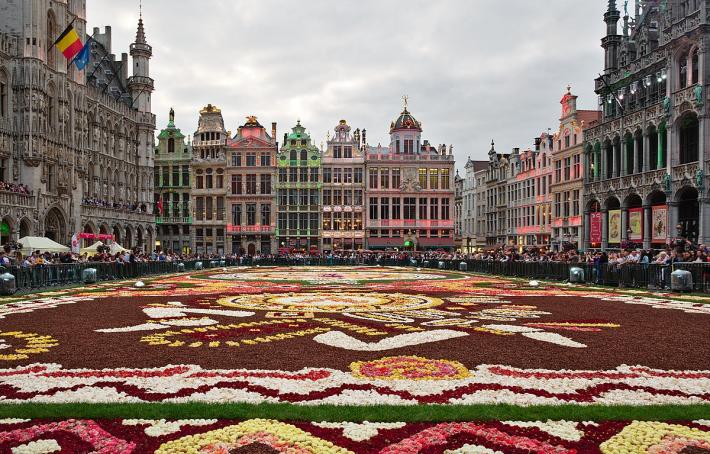
Tapis de Fleurs de Bruxelles and the City of Brussels, Flower Carpet of Brussels, 2017.
The Flower Carpet of Brussels: “Ephemeral art is not of lesser value because its lifespan is short. Quite the opposite: it is a valuable allegory of the brevity of our existence.” Miguel Márquez-Márquez, Governor of the State of Guanajuato, Mexico made this statement in support of the 2018 Flower Carpet Event honoring Latin American culture and celebrating the twentieth anniversary of the Grand-Place of Brussels becoming a Unesco World Heritage site. Since 1971, and every two years thereafter, the nonprofit organization Tapis de Fleurs de Bruxelles in collaboration with the City of Brussels brings together a team of artists, designers, gardeners, and over a hundred volunteers who, in eight hours, using hundreds of thousands of cut flowers, create a profusion of living color covering 1,800 square meters. Ana Rosa Aguilar Aguado, the young Mexican graphic designer known as “Roo” incorporated signs and symbols representing her rich cultural traditions for this year’s carpet. It was viewed by tens of thousands of international visitors over a three-day period in August.
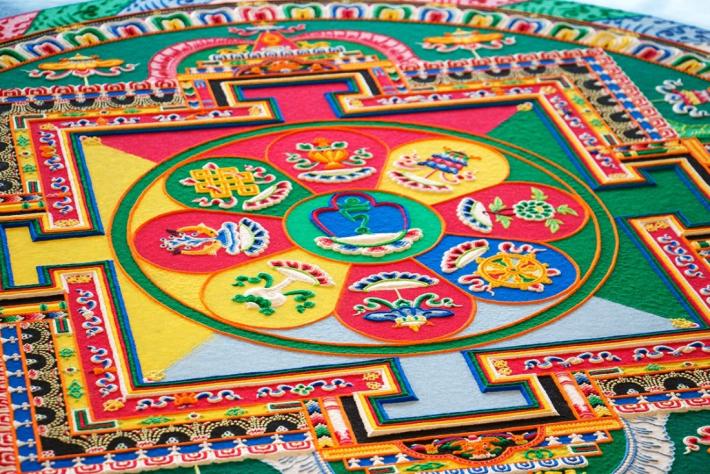
Tibetan Buddhist monks of the Drepung Loseling Monastery, Mandala, 2018. The Asia Society Center, Texas.
Tibetan Buddhist Sand Mandalas is an ancient tradition of creating complex circular designs with colored sand. Traditionally carried out by four monks over a period of several weeks, the ritualistic destruction of the work upon its completion symbolizes the impermanence of life. Energy focused on healing the environment guides the process, acknowledging respect for the earth and hope for a sustainable future. Originally the color for the mandalas came from granules of crushed stone. Now, natural sand from the Himalayas, mixed with pigments sourced from flower pollen, charcoal, red sandstone, or powdered roots and bark may be used. The Asia Society has thirteen locations throughout the world and often sponsors exhibitions, events, and educational programs that include demonstrations such as this mandala sand painting performed at the Asia Society Center in Texas in August 2018. This was the fourth consecutive year Tibetan Buddhist monks from Drepung Loseling Monastery in southern India were invited to create a mandala sand painting and perform Sacred Music and Sacred Dance with traditional instruments. Visitors to the Texas Center were encouraged to participate in a community mandala sand painting during the event.
Cynthia Close
Cynthia Close holds a MFA from Boston University, was an instructor in drawing and painting, Dean of Admissions at The Art Institute of Boston, founder of ARTWORKS Consulting, and former executive director/president of Documentary Educational Resources, a film company. She was the inaugural art editor for the literary and art journal Mud Season Review. She now writes about art and culture for several publications.























